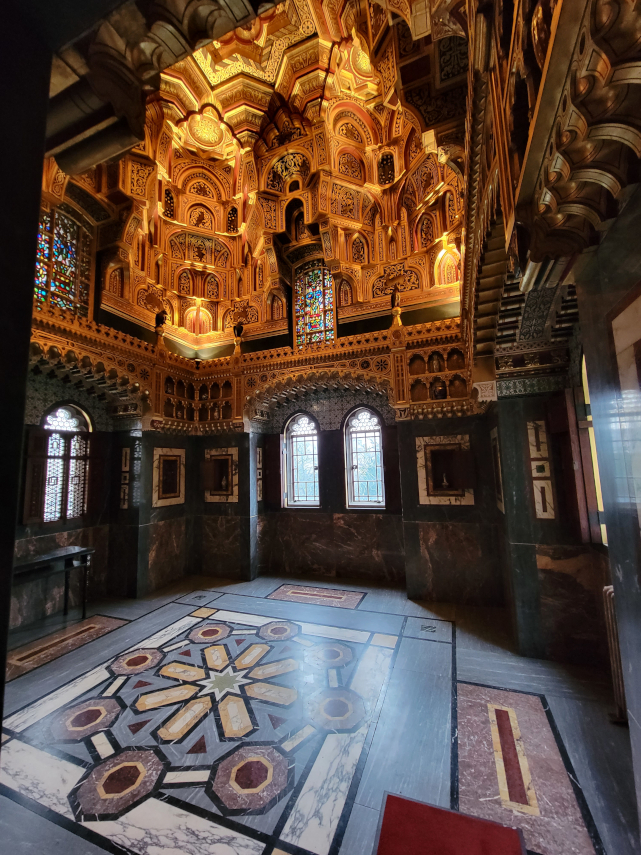
 DoneThat
DoneThat
Cardiff Castle (1), Glamorgan.


The extraordinary ceiling of the Winter Smoking Room shows the twelve signs of the Zodiac representing the months of the year painted by artist Fred Weekes.
| Comment | More of the Winter Smoking Room |

This is the Nursery and the decoration is appropriate but I doubt that young children would have been able to appreciate the artistry.
In the castle one quickly realises that when entering a room one should look up at the ceiling.
| Comment | More of the Nursery |

The Banqueting Hall is the largest room in the castle and is in the oldest part of the building, dating from the 15th century.
The theme of the hall's decoration is medieval history. The murals on the walls depict scenes from the conflict known as the 'Anarchy'.
The feature at the south end of the hall is a minstrels' gallery, where musicians would play during Lord Bute's dinner parties.
| Comment | More of the Banqueting Hall |

The Library once formed part of the original fifteenth century Great Hall. It had actually been two separate rooms until the 1870s, when the new Banqueting Hall was installed above and work began on creating a new Library.
| Comment | More of the Library |

The Octagon Tower originates from the 13th Earl of Warwick's extensive work on the castle when he founded the main range on the west side of the castle which was dominated by a tall octagonal tower.
Burges, of course, restored the Octagon Tower to its current form.
| Comment | More of the Octagon Tower |

Lord Bute's Bedroom, Cardiff Castle.
While known as a bedroom, it was in fact mainly used as a dressing room and a bathroom, with Lord Bute preferring to sleep with Lady Bute in the nearby Chintz Bedroom.
This room is located in the Bute Tower, originally built during the 1700s but extended by the 3rd Marquess of Bute almost a century later.| Comment | More of Lord Bute's Bedroom |

The Roof Garden is at the top of the Bute Tower and dates from around 1875. It is a highly unusual space and was intended as a quiet retreat for Lord Bute. The garden is Roman in style and was inspired by ancient Roman villas seen on visits to Pompeii.
The bronze fountain was designed by William Burges and the bronze flower boxes are copied from Roman charcoal burners, from examples discovered at Pompeii.
| Comment | More of the Roof Garden |

The Small Dining Room
This room was used as a dining room for members of the Bute family when there were few or no guests. Originally, this was a west facing Drawing Room and was used by the 2nd Marchioness of Bute. Her monogram and heraldry appear in the decoration.
The table is original to the room and is one of only two in existence designed to accommodate a fully fruiting grape vine.
| Comment | More of the Small Dining Room |

The Arab Room, Cardiff Castle.
This room was one of the last that William Burges designed and dates from the year of his death, 1881.
In front of each of the stained glass windows is a crystal ball which were placed so that sunlight would hit them and refract light into the ceiling. The walls and floor are made of Italian marble but it is the ceiling that draws one's attention.
| Comment | More of the Arab Room |